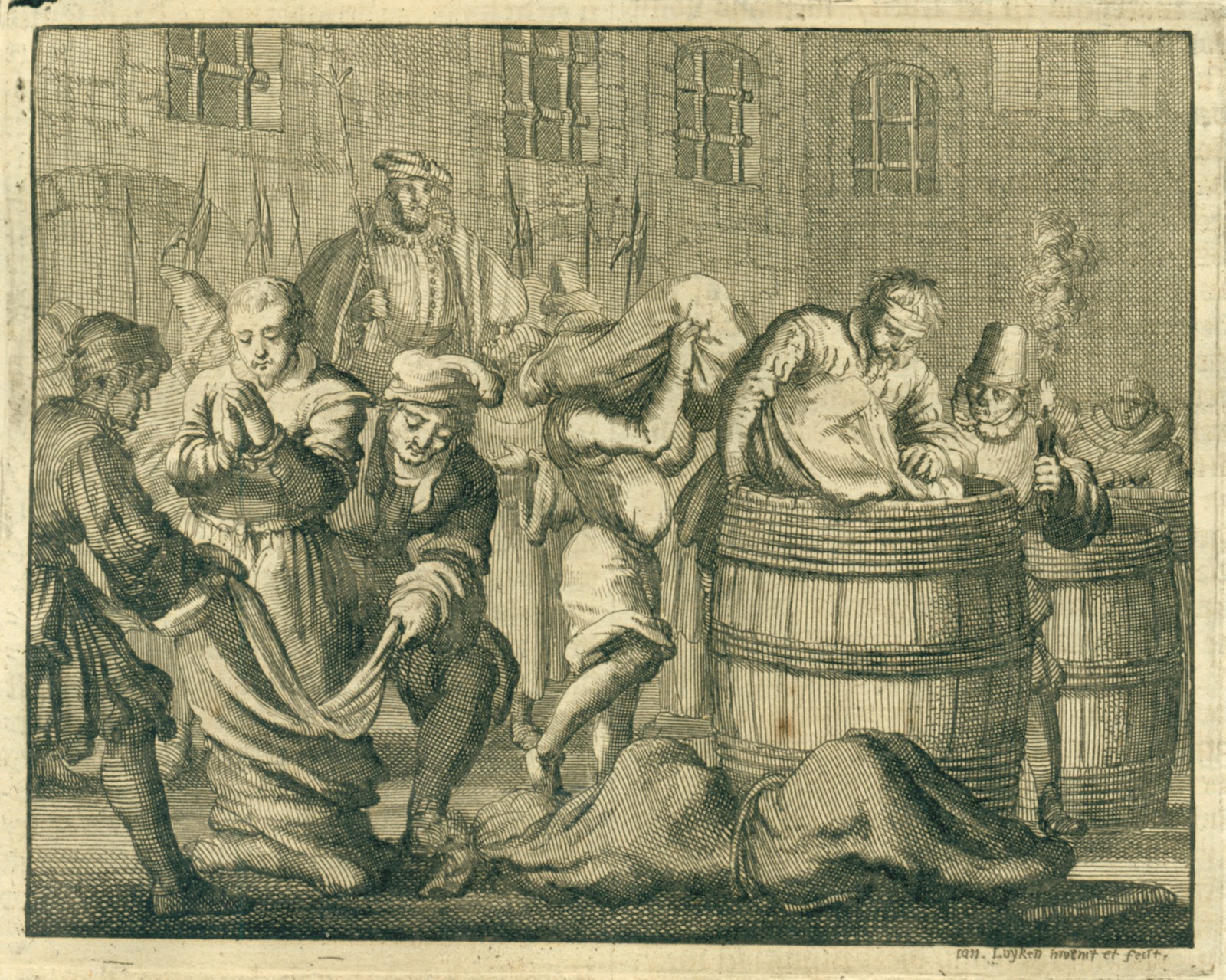Many books and history lessons have been dedicated to the popular reformers such as: Luther, Zwingli, Calvin, Knox, Wycliff, and the like. Much less attention is given to the many martyrs who died in the battle over the future of Christianity. There are hundreds of innocent victims that were drowned, burned at the stake, tortured, and even caged and starved.
This series will be paying homage to the many saints that gave their lives in the fight for their faith. Each entry will be highlighting a courageous man or woman who paid the ultimate price so that we can have freedom of faith. But before we get too far let’s go over some basic reformation information.
Anabaptism under attack
When the Catholic church started to sell indulgences in the 14th and 15th century guys like John Wycliffe began to speak out. With the birth of the printing press in the 15th century people opposed to the church could publicly voice their opposition and spread that much more rapidly than previous. With the rebirth of the original biblical languages and new translations in the various languages of the people, the Catholic church was in a full-on onslaught. To make matters worse, many inside of the Catholic church wanted reform and they were not going to quiet about it.
The final straw for the Catholic church was the invasion of the Turks from eastern Europe. With pressure on all side and a foreign invasion looming, the Catholic church went with the nuclear option and decided to start executing those who were driving opposition to the church. One of the main groups were the Anabaptists. The Anabaptists were protestants that believed in believer’s baptism and they were re-baptizing adults. This was considered treason to the church. The other problem with the Anabaptists is that they were pacifists. Rome had no use for protesters that refused to even defend Europe against the Turks. They were as good as dead.
The Decree Against The Anabaptists
In 1525, the papacy decided that it was time to put an end to the Anabaptism sweeping over parts of Europe.
“Therefore we ordain and will, that henceforth all men, women, youth, and maidens forsake Anabaptism, and practice it no longer from this time on, and that they have their infants baptized; and whosoever shall act contrary to this public edict, shall, as often as it occurs, be fined one mark silver; and if any should prove utterly disobedient and obstinate, they shall be dealt with more severely; for we shall protect the obedient, and punish the disobedient according to his deserts, without bearing with him any longer. Let everyone act accordingly. All this we confirm by this public document, sealed with the seal of our city, and given on St. Andrew’s day, A. D. 1525.”
No longer would it be permissible to baptize an adult unless they had previously been unbaptized. They were threatened initially with fines but the church had already started executing Christians before the letter was released.
The First Martyr
The first Martyr recorded in the Martyr’s Mirror for this time is Caspar Tauber (A. D. 1524). In what is the first and shortest entry in the list of Anabaptist martyrs, the account tells of Caspar’s execution via burning at the stake.
In this year, also Caspar Tauber, a tradesman and citizen of Vienna, in Austria, was apprehended for the Christian faith; and as he faithfully and steadfastly continued to confess Christ, without apostatizing, he was condemned and burned. (Martyr’s Mirror)
In the remainder of this series we are going to highlight some of most fascinating and encouraging stories of those who died for the faith.

The historic record is not clear that Caspar Tauber was an Anabaptist. He was known to have been influenced by the Swiss Anabaptist, Ulrich Zwingli. He was also impressed by Martin Luther, Zwingli’s opponent at the 1529 Marburger Religionsgespräch. In all likelihood Tauber was a syncretist rather than an Anabaptist. It is odd that you are proud enough to note that you are a “seminary M.Div graduate” but decline to name the institution that awarded that degree. My M.Div. is from Concordia Theological Seminary – Fort Wayne with a doctorate from Emory.
This series entry is merely introducing the Martyr’s Mirror (an Anabaptist publication) as the primary source for the future entries. It’s not a biographical entry about Tauber’s life and beliefs. Given that he died in 1524 and the first proper group to accept the moniker of Anabaptist was formed in 1525 it’s safe to assume that he was not part of the movement. But at the time of his death many were called Anabaptists that were not really part of the official group. Anyone supporting adult baptism was technically an Anabaptist.
That being said, Ulrich Zwingli was not an Anabaptist. In fact, he wanted to keep the practice of infant/child baptism. He even publicly agree with the decree of 1526, stating that the Anabaptists should be drown in the river. He was no friend of the Anabaptists in any way.
It was his followers that created the Anabaptist movement, Conrad Grebel, Felix Mantz, George Blaurock, etc.
Congratulations on having your doctorate. I find it odd that you are proud enough to note that you have a doctorate from Emory but “decline” to name what field of study.
See what I did there?
Assuming things from omission is always a bad decision. My M.Div was from Ashland Theological Seminary with an emphasis on Biblical languages. I also had two years of Hebrew before Seminary, hence the concentration on languages.